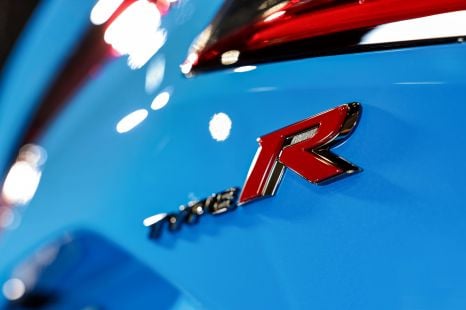

Damion Smy
Honda Prelude Type R ruled out... for now
6 Hours Ago
Mitsubishi Pajero Sport GSR is the range-topping model, and competes with the flagship Isuzu MU-X LS-T or base Ford Everest Ambiente.
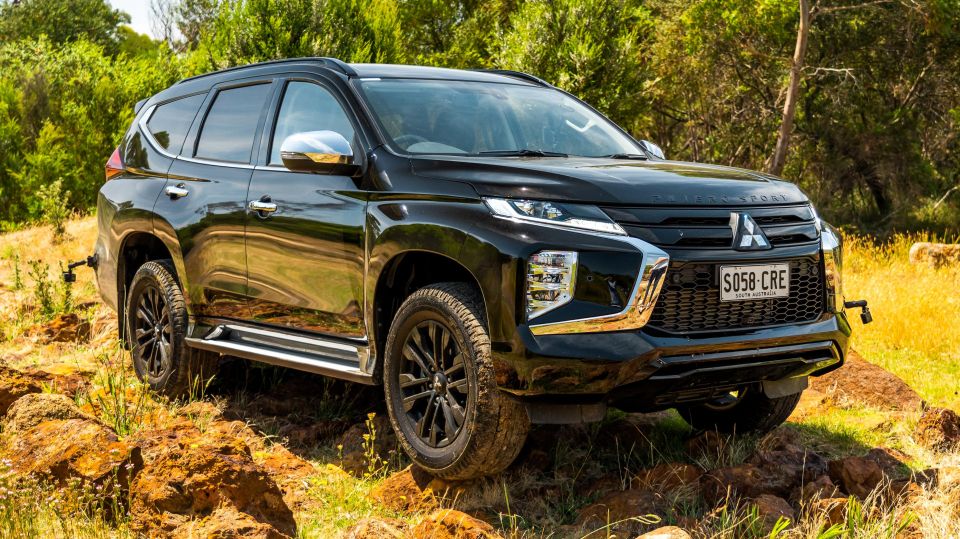
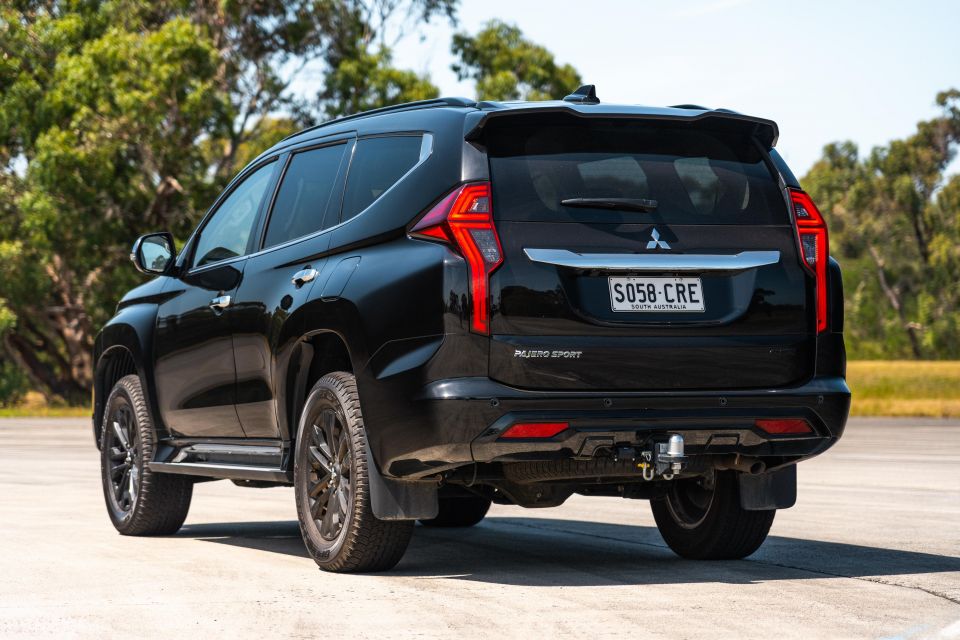

Quickly see how this car stacks up against its competition. Select any benchmark to see more details.
Where expert car reviews meet expert car buying – CarExpert gives you trusted advice, personalised service and real savings on your next new car.
The Mitsubishi Pajero Sport is a long-standing favourite among buyers chasing a rugged, ladder-frame diesel SUV, who don’t want to pony up for a Toyota Prado or Ford Everest.
On sale since late 2015, the Triton-based Pajero Sport has received several upgrades along the way, the most substantial of which launched in early 2020.
Here we take a look at the latest 2023 model, testing in top-of-the-range GSR grade which adds blacked-out alloy wheels, as well as black roof, roof spoiler and roof rails over the Exceed.
In other words, it wants to put the ‘Sport’ in ‘Pajero Sport’, from a design perspective anyway.
At the time of writing the Pajero Sport GSR range-topper costs $62,440 plus on-road costs, equal to $65,490 drive-away according to Mitsubishi’s website.

This is about the same as the advertised drive-away price of a base Ford Everest Ambiente 4WD ($64,300) and more than $11,000 cheaper than an Everest Sport V6 ($76,865).
On the other hand the newer-design Isuzu MU-X LS-T 4×4 range-topper is currently available for $65,990 drive-away, which probably makes it the Pajero Sport’s most direct rival.
for those who really want to drive their dollar further, the Pajero Sport GLX 4×4 is retailing for $52,740, if you’re willing to go without the third seating row and some mod-cons.
MORE: 2023 Mitsubishi Pajero Sport price and specs
Buy your new car without the stress. It's fast, simple and completely free.

Great service from Travis and team, second time I have used this business would not hesitate to recommend them to anyone
Craig C.
Purchased a Ford Ranger in Sunshine Coast, QLD
CarExpert helped Craig save thousands on his Ford Ranger, now let us save you on your next new car.
Find a dealIt’s all screwed-together really well, built to last. But it’s not exactly a premium experience, with a lot of ute-style hard plastics on the doors and dash (somewhat offset by padded knee rests on the tunnel and some silvery trimmings).
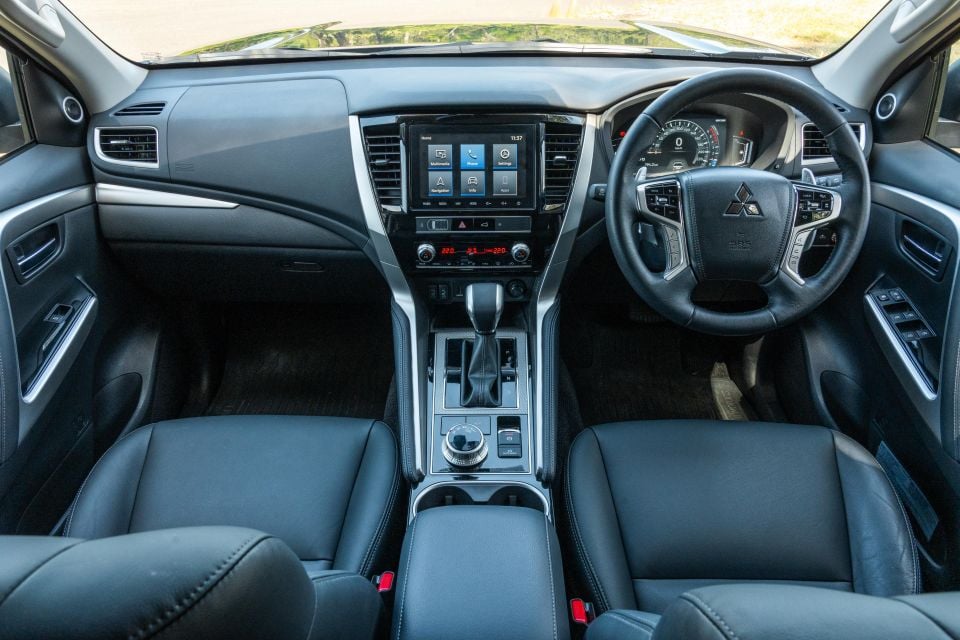
The driver’s seat is trimmed in hard-wearing leather with power adjustments including lumbar, and the wheel adjusts for rake and reach. The elevated ride height enables a good driving position for people of various heights – shorter folk will appreciate the sturdy A-pillar grab handles.
The wheel has a lot of buttons – for audio, phone, cruise control, camera display, and trip computer menus – but they’re intuitively laid out. Note those Ralliart-style metallic paddle shifters.
This high-grade Pajero Sport has an LCD digital instrument cluster that looks great but isn’t overloaded with functions: it displays speedometer and tachometer, fuel level, consumption and driving range, engine temperature, and outside temperature.
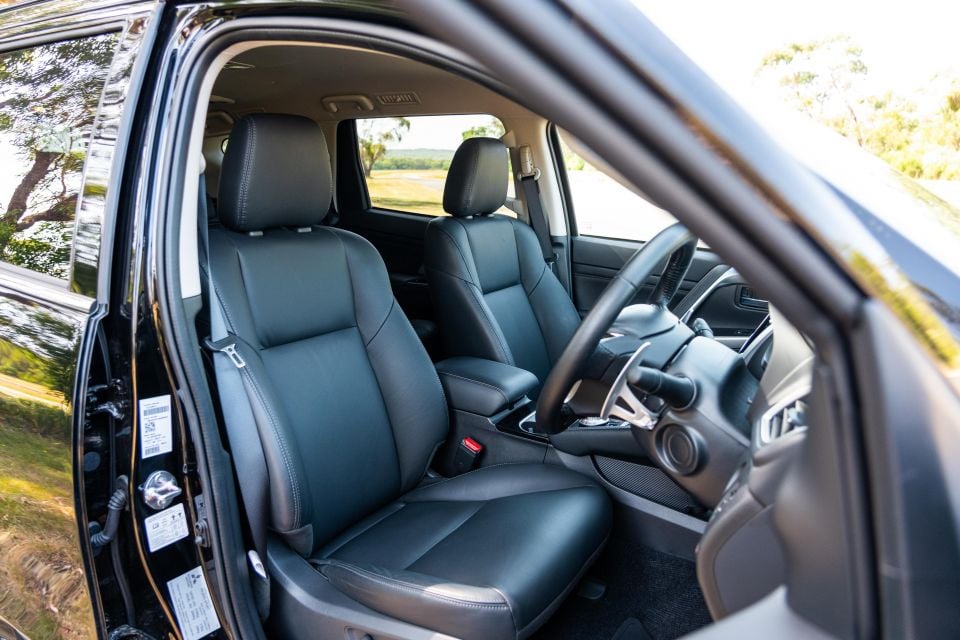
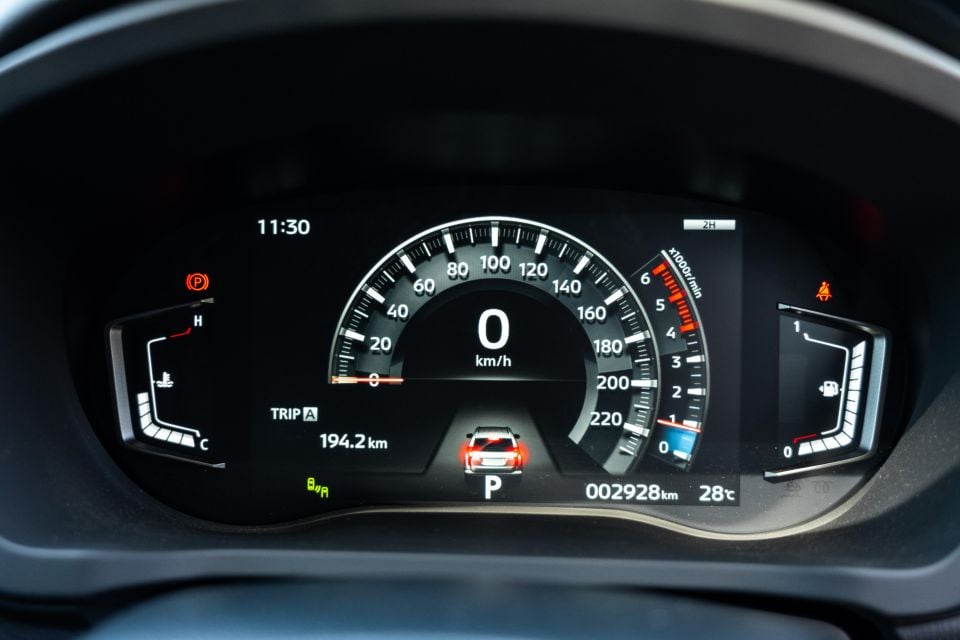
The 8.0-inch multimedia touchscreen offers TomTom satellite-navigation, as well as wired Apple CarPlay and Android Auto. It’s neither quick to load nor furnished with attractive graphics, and the voice recognition system seems fairly useless. Moreover the surround-view camera is low-resolution.
It looks very dated compared to an Everest’s large portrait display with newer software. If you don’t need the latest tech it’ll probably do the job, but just know there are far better systems out there – either in rival SUVs or through the aftermarket.
The climate control is operated by some plasticky dials and buttons with orange font, while further down sit buttons for each seat heater, the diff lock switch, two USB-A ports, a HDMI port, and a 12V.

The centre tunnel holds a rather tasteful gear-shifter surrounded by silvery metal-look trims, ahead of the park brake and Auto Hold switches, and a solid rotary dial to select 4×4 modes.
Another criticism that springs to mind is the over-reliance on piano black trims which look terrible once you’re out of the showroom. It shows up dust, scratches, smudges and sun glare like nothing else, and this is a car designed for outdoor adventures.
Storage comprises a centre console, single glovebox, two toothed cupholders, a sunglasses cubby in the roof, 1L bottle-holders in the doors, and small spots under the centre tunnel. There’s an open section ahead of the shifter for your phone, but no wireless charging pad.
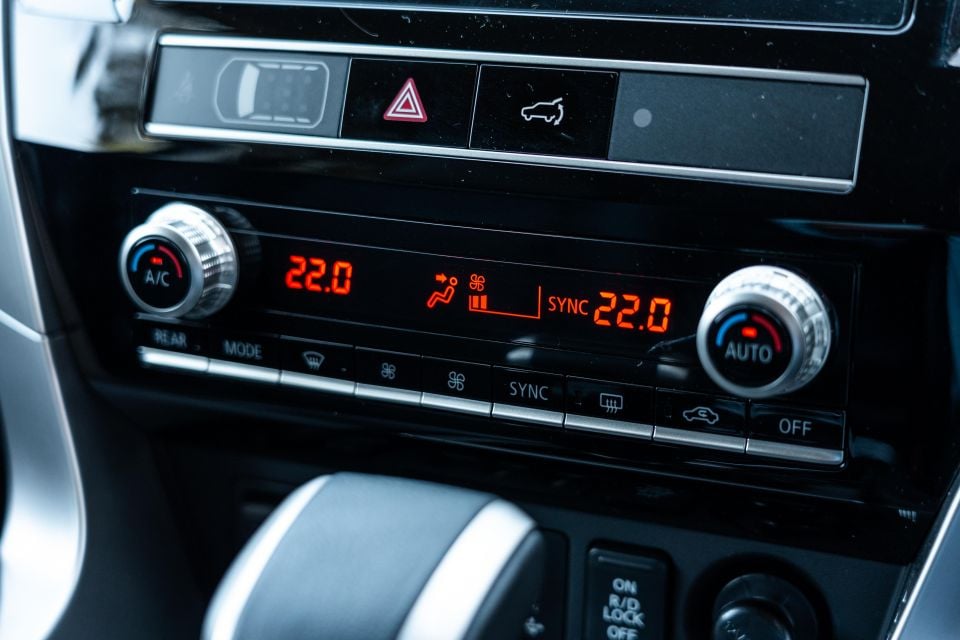

Being elevated, the middle-row stadium-style bench seats the occupants up very high, which can cause issues for taller folk such as me – at 194cm my head was firmly pressing into the roof. However our 185cm tester Paul had headroom to spare.
There’s sufficient legroom for adults in each outboard seat, though the base lacks thigh support, and toe room is quite tight too. The centre seatbelt is roof-mounted rather than seat-mounted and the windows don’t go all the way down.
Another thing to note is the interior isn’t wide enough to comfortably seat three adults across – the Pajero Sport is 108mm narrower than an Everest for context. Kids and teenagers will be comfortable, but just consider the typical occupants you expect to carry.
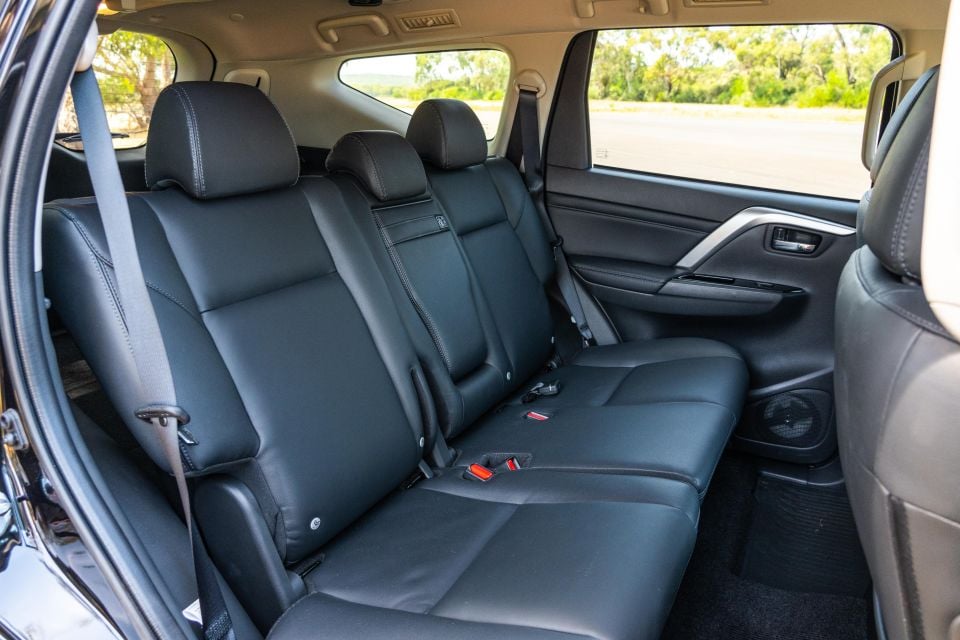

There are plenty of amenities for middle-row occupants including fold-down centre armrest with cupholders, grab handles in the B-pillar and overhead, air vents in the roof, and both USB and 220V/150W outlets. This latter feature should be great for camping.
While base Pajero Sports have five seats, higher-grade models have seven, with access to the third row via a passenger’s side tilt-and-tumble seat portion.
The third row is tight on headroom but kneeroom is surprisingly good, though the ‘sporty’ raked window makes seeing out a bit of a challenge. Rearmost occupants get air vents and their own cupholders, which is thoughtful.
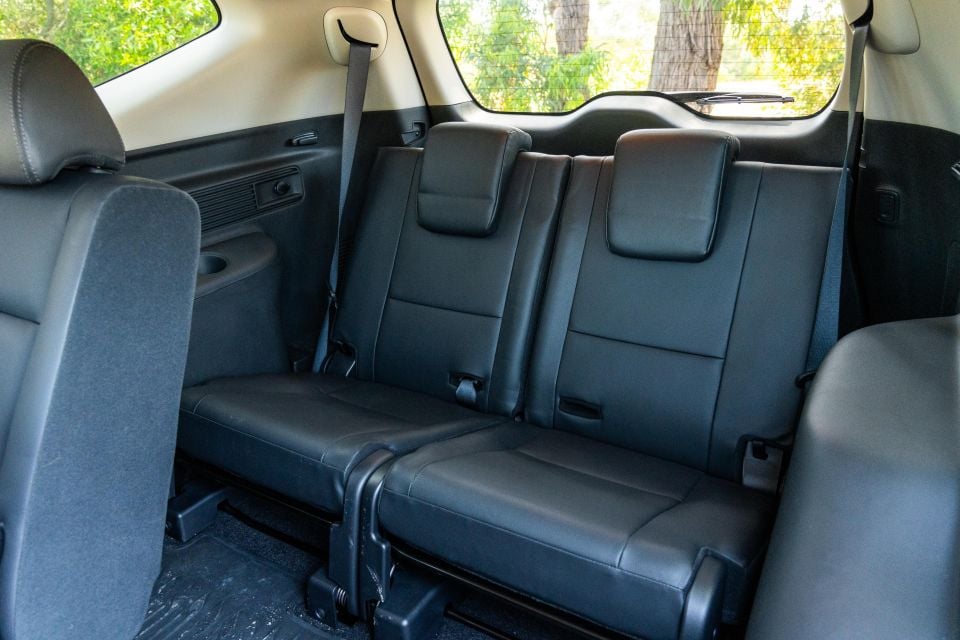
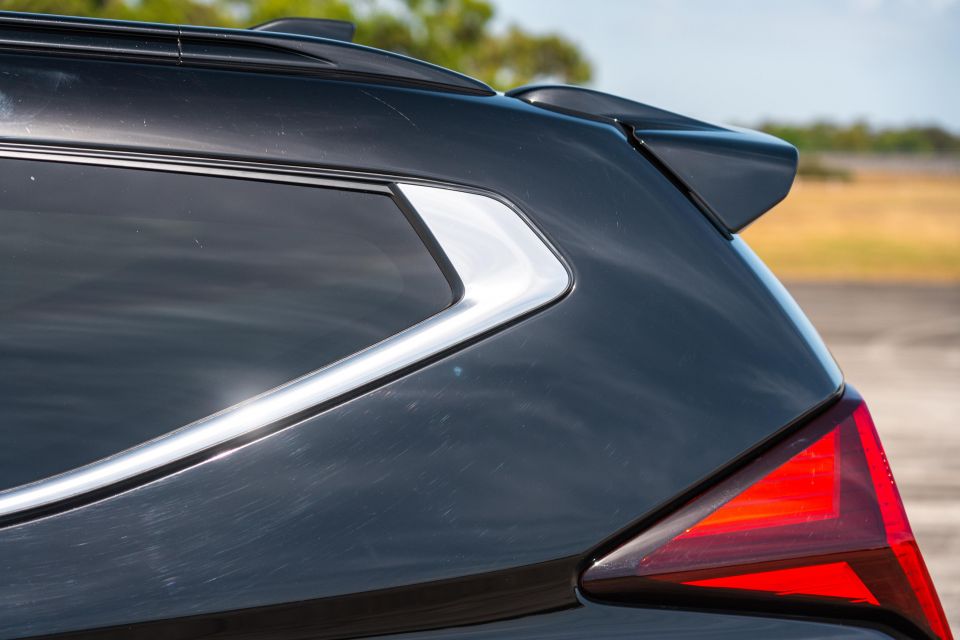
Access to the boot comes via a powered tailgate, which we wish would lift a little higher so we didn’t have to stoop.
Boot space behind the third seating row is only 131 litres, but when not in use you can stow the sixth and seventh seats out of the way.
The third row seats don’t fold neatly into the floor, but rather there’s a two-stage process of stowing the bases flush against the back of the second row and then pushing the backs into the floor. Once this is done there’s a 502L boot.
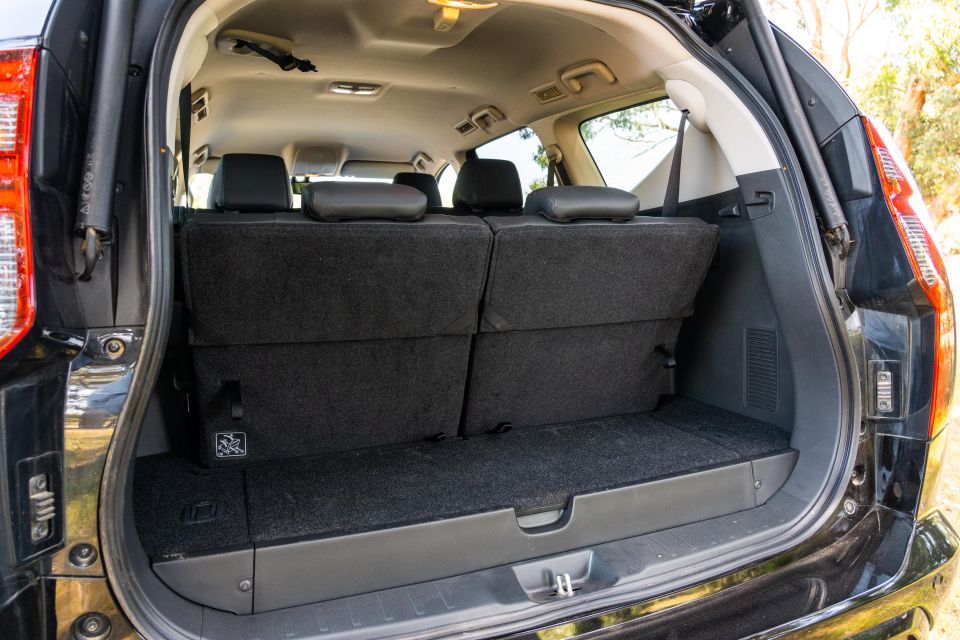
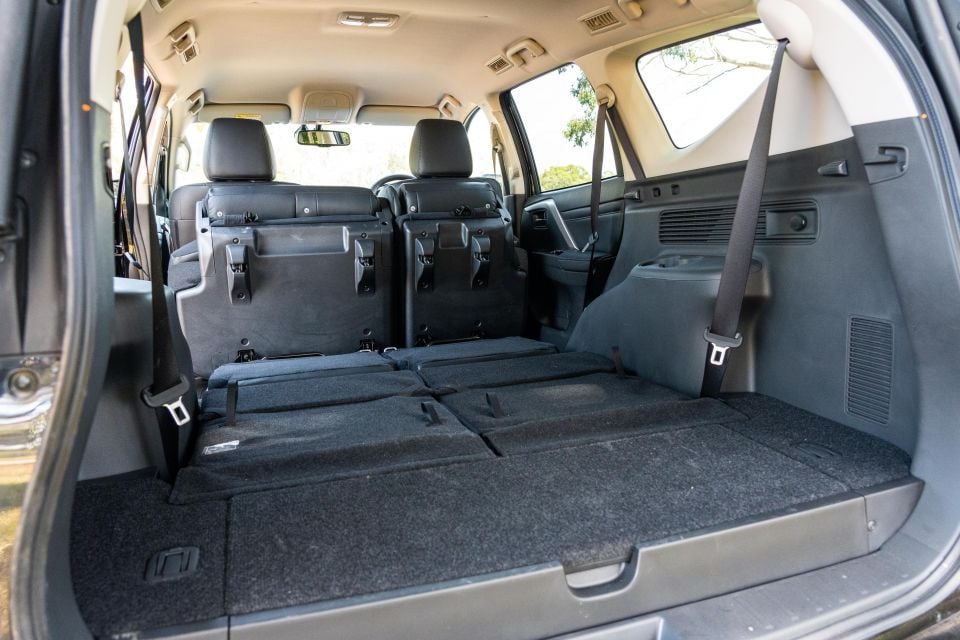
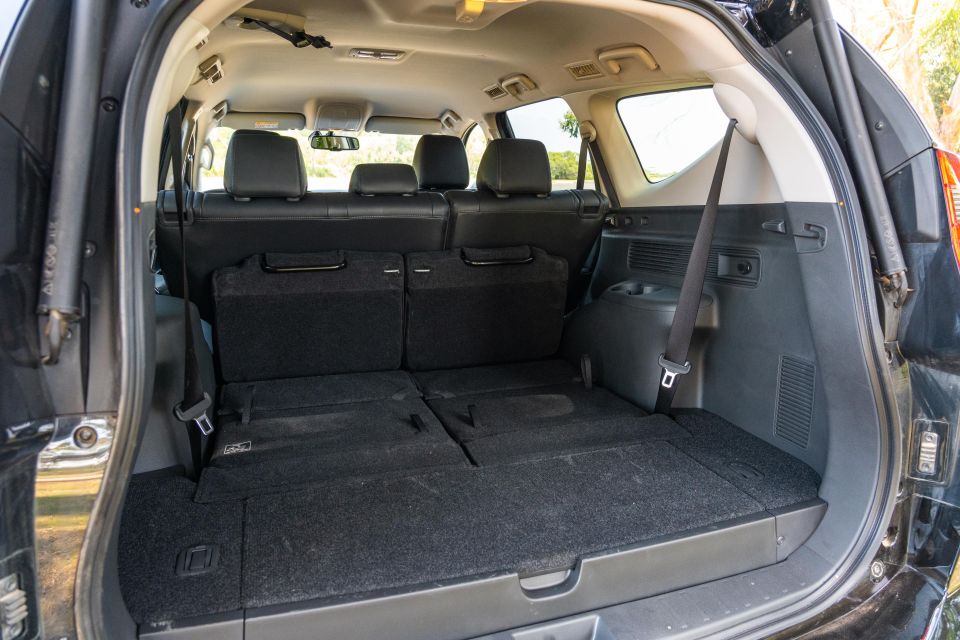
The middle-row also tumbles out of the way to expand the cabin capacity to 1500L of cargo and two occupants – with a 1.6m-long loading floor and 1m between the wheel arches.
The Pajero Sport uses the Triton’s 2.4-litre turbo-diesel with 133kW of power and 430Nm of torque, but it gets a better eight-speed automatic transmission with paddles compared to the Triton’s six cogs.
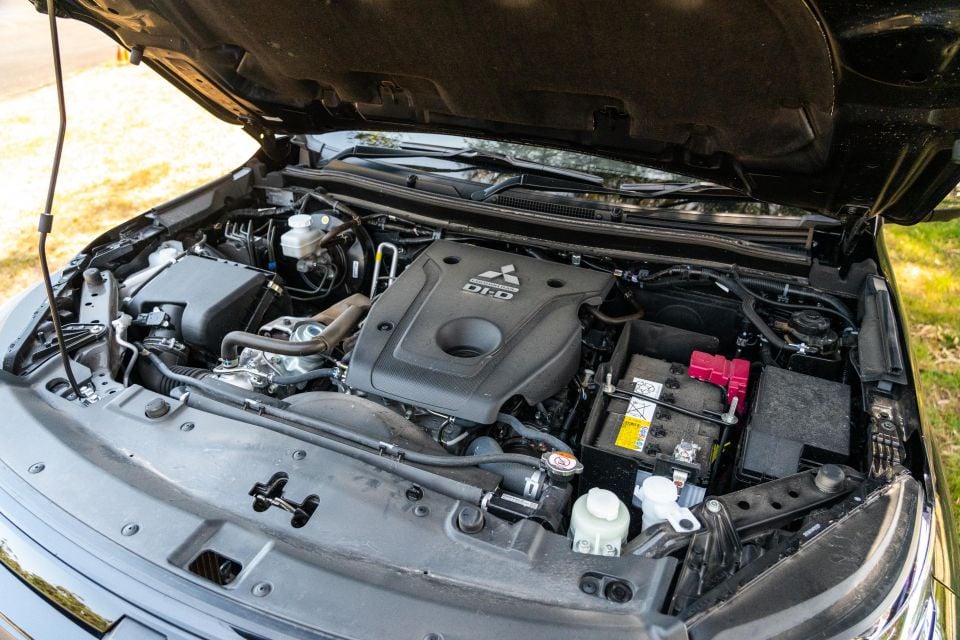
Combined-cycle ADR fuel consumption is 8.0L per 100km which, given the 68L diesel tank, promises a driving range somewhere around 850km. Take this with a pinch of salt though.
It runs Mitsubishi’s clever Super Select II 4WD system which offers fuel-saving rear-wheel drive (2H) and full-time 4WD (4H) models. For off-roading there’s a 4HLc mode (high-range 4WD with a locked centre diff for 50:50 torque split), and traditional low-range (4L).
Its claimed braked-trailer towing capacity is 3100kg, but if you’re at maximum payload then this falls to 2790kg by way of the vehicle’s gross combination mass figure.
While the Pajero Sport shares its ladder frame with the Triton, Mitsubishi has swapped out the ute’s rear leaf springs in favour of coils with three linkages and a stabiliser bar.
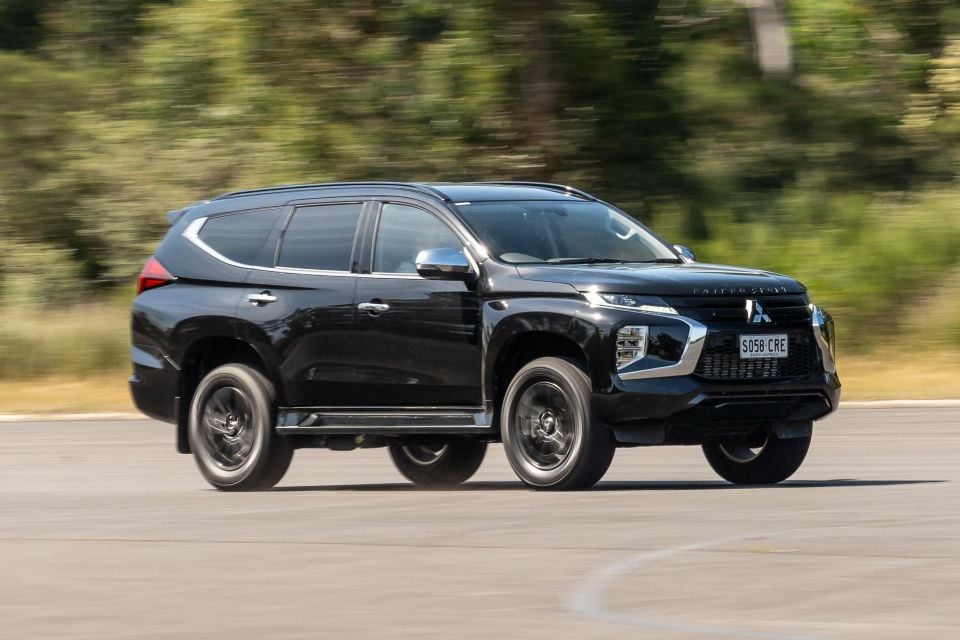
It also changes the Triton’s six-speed auto for an eight-speed unit.
The 2.4-litre diesel engine is down on power and torque against its main rivals, though its kerb weight of 2125kg is also quite light by class standards – for instance an Everest 4WD is around 300kg heavier.
Its performance is still fairly leisurely overall, with a 0-100km/h time of 11.7 seconds on our Vbox, and an overtaking (80-120km/h) test time of 9.2 seconds with two occupants.
The transmission is eager to change up a gear as quickly as it can to preserve fuel, but kicks down decisively enough, and can be overridden with those big metallic paddle shifters.
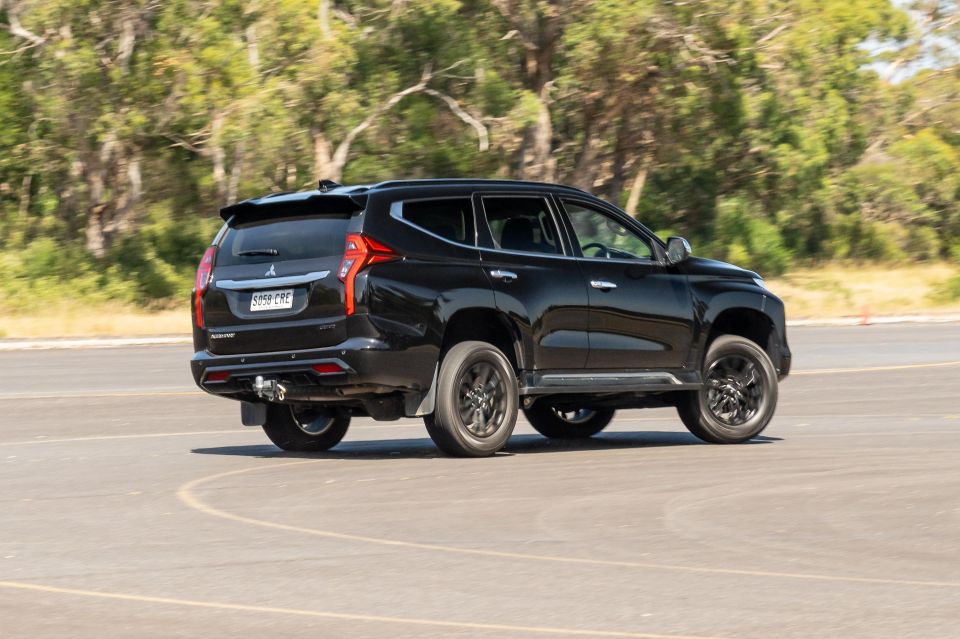
In terms of fuel efficiency we averaged 9.8L/100km overall, which is actually solid for a vehicle this size despite missing the ADR claim by 22.5 per cent.
Being designed for off-roading, the suspension is very soft, the trade off being quite poor body control over undulations, with a tendency to float. There’s also a lot of body roll in corners, meaning the ‘Sport’ in ‘Pajero Sport’ is a meaningless bit of marketing.
The hydraulic power steering is quite heavy at low speeds next to the MU-X or Everest, but on the counter this tends to give you more feel of the road or trail.
Overall we experienced pretty good road noise suppression even with those chunky Toyo Open Country A32 tyres.
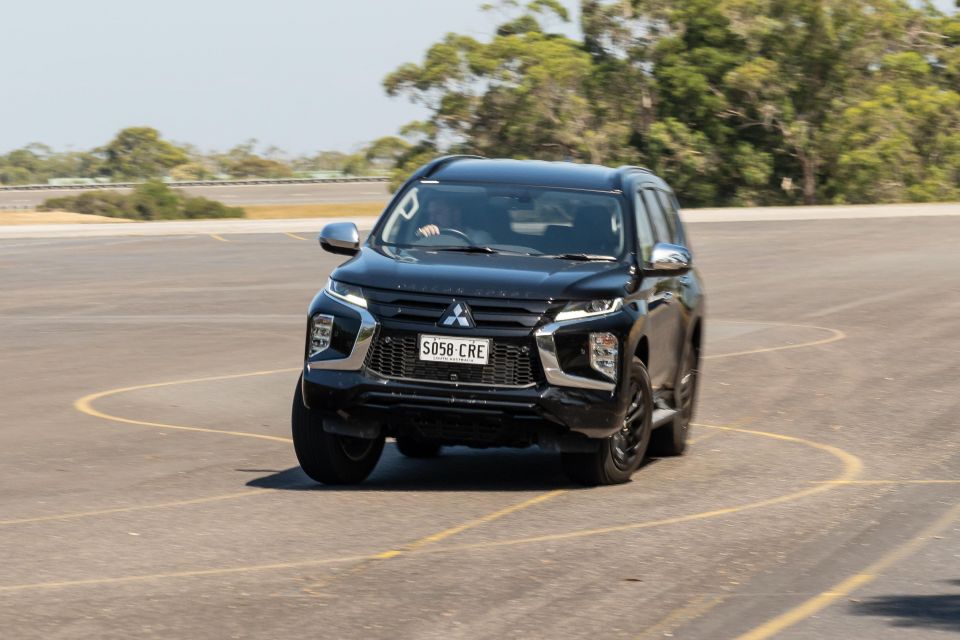
Note the towing capacity is also some 400kg lower than the MU-X and Everest.
One area where the Pajero Sport is undeniably good is off the beaten path. It has 218mm clearance, 30 degree approach and 24 departure angles, 700mm wading depth capacity, and an 11.2m, turning circle.
The 4×4 system comes with 50:50 high-range, variable full-time 4WD using traction control, or proper low-range with a diff locker at the rear. In short, it walked across out offset mogul, hill climb, and rock course as the above video shows in greater detail.
We’d be replacing those side steps with rock sliders if we were serious off-roaders however.
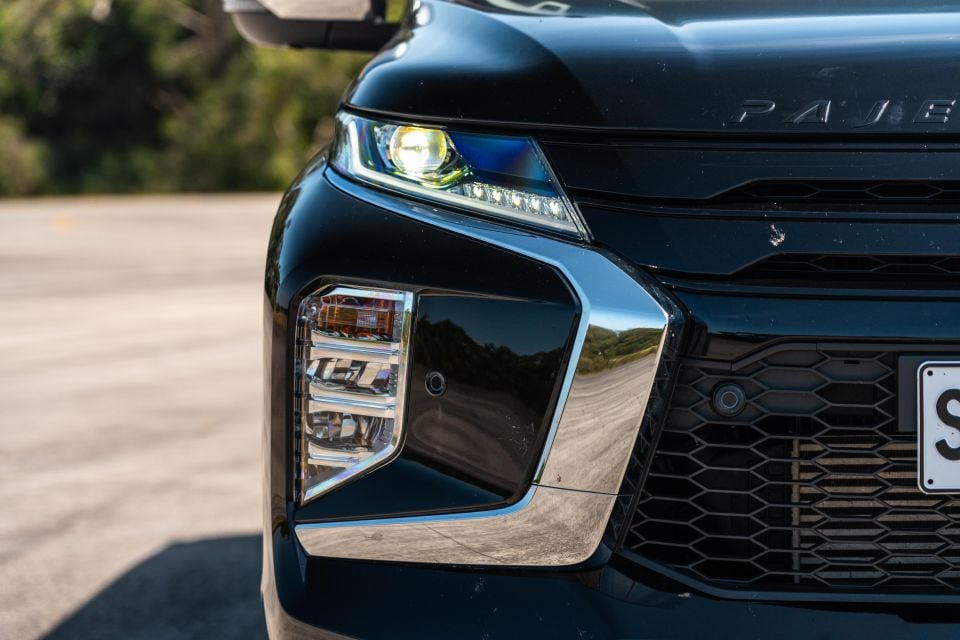

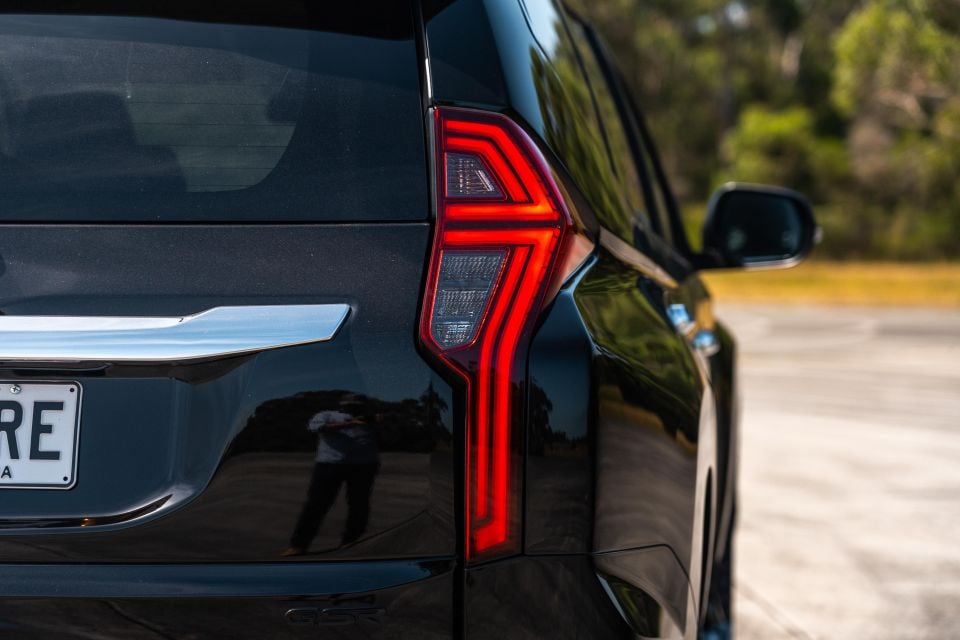
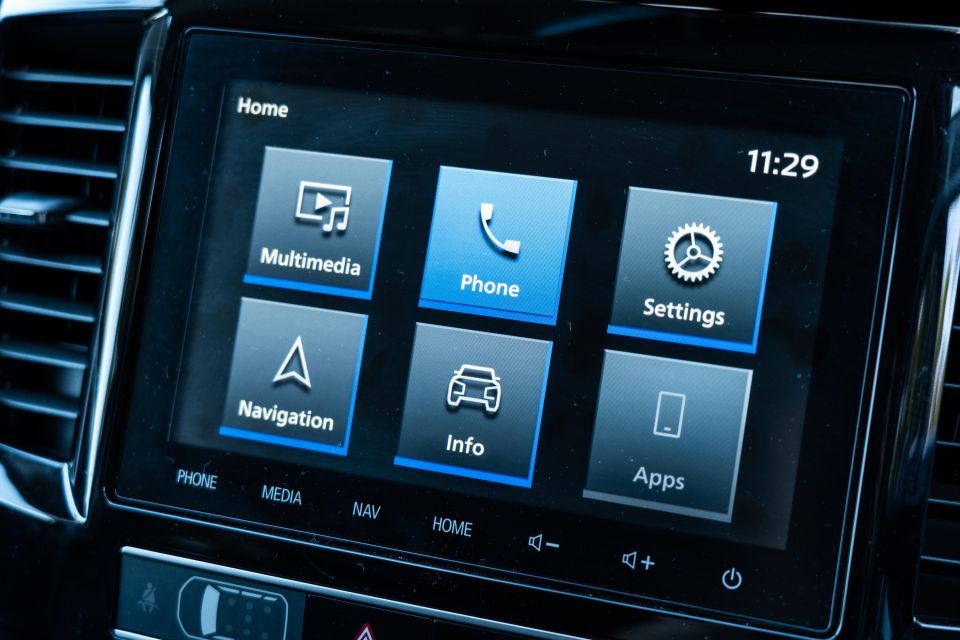
Where expert car reviews meet expert car buying – CarExpert gives you trusted advice, personalised service and real savings on your next new car.
Pajero Sport GSR highlights:
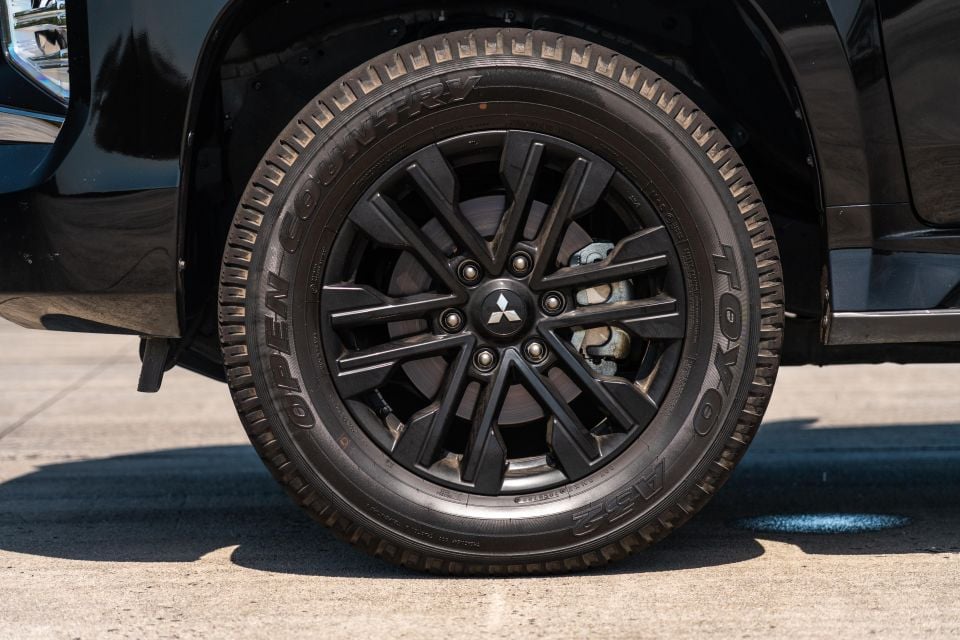

Mitsubishi’s Remote Smartphone App also lets you control the tailgate, check the vehicle’s health status, and find your vehicle’s last location.
Colours are limited to White Diamond, Terra Rossa (red) and Black Mica, with all GSR variants getting a black roof.
Mitsubishi also offers an array of factory accessories – as do all brands in this segment – as well as some packages. One that grabbed my eye was the Expedition Pack which adds a front bullbar, snorkel, electronic brake controller, roof tray, and roof cross bars.
In terms of its ANCAP crash rating, the Pajero Sport is now classified as unrated.
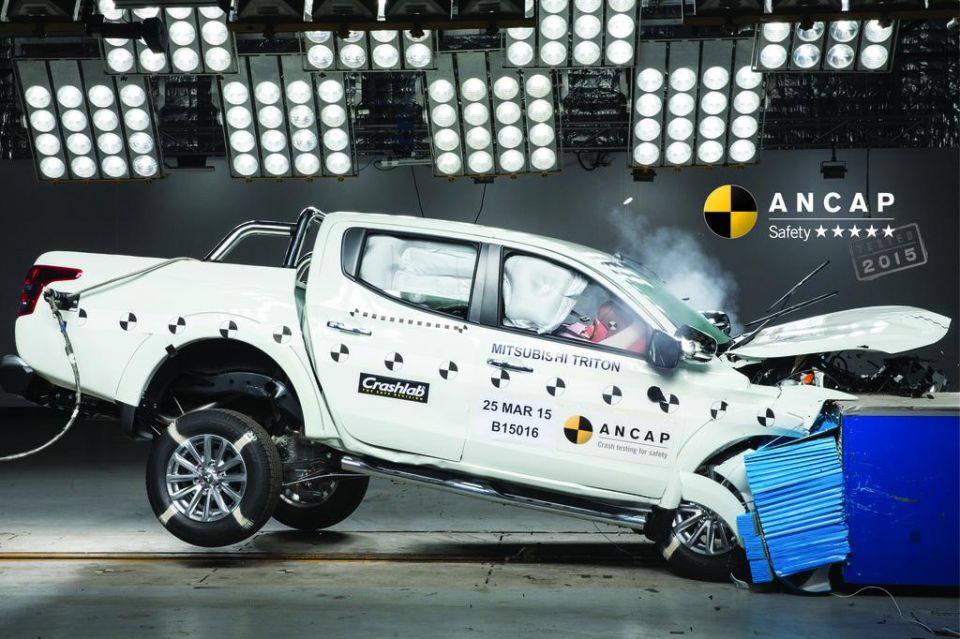
It achieved a five-star score in 2015 (an excellent 36.22 out of 37) based on the Triton ute, but the crash-tester’s ratings have a time limit and this is an older-design vehicle.
Standard safety features include:
While Mitsubishi Australia’s standard warranty is five years or 100,000km, it will extend this cover to 10 years or 200,000km provided all scheduled services are performed within the authorised Mitsubishi dealer network, and done so in line with the schedule.
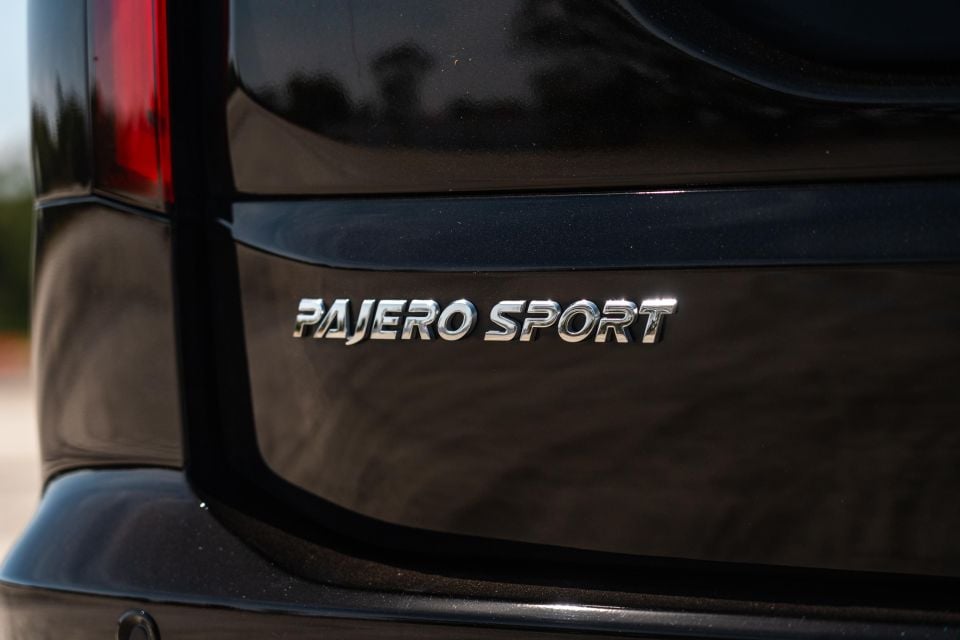
This is likely to keep more people returning to the dealer, which is the point.
Pajero Sport service pricing:
That equals $6890 over a decade or 150,000km for scheduled services, but note that as with most carmakers this does not include things such as new brake pads, tyres, wheel alignment, fuses, and damage.
The Pajero Sport feels behind the class-leaders in terms of on-road ride and handling, engine performance, and interior technologies – a reflection of its older design.
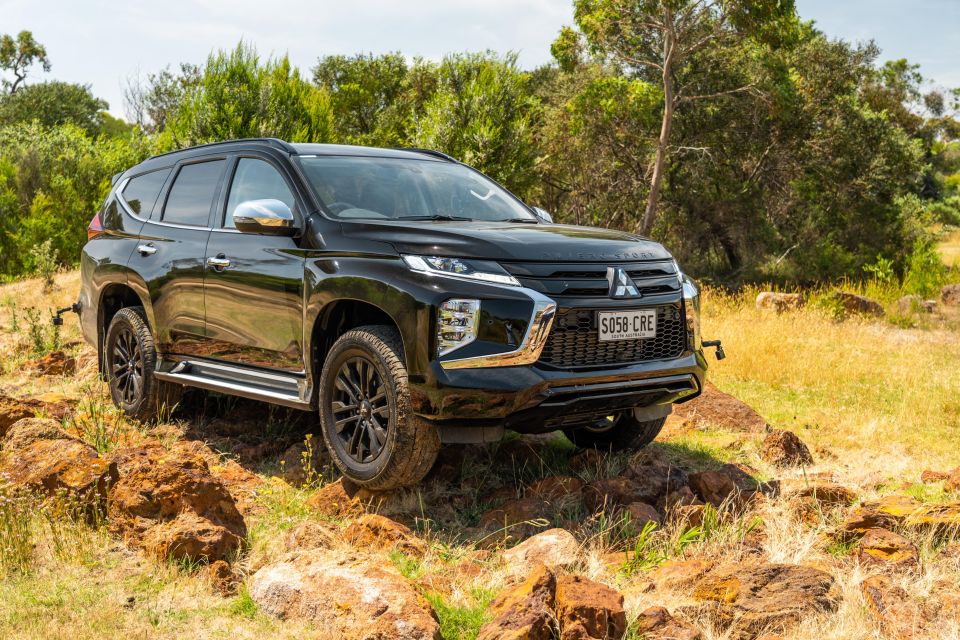
But it’s excellent off-road, is available with a decade of warranty, and its price point is reasonable.
On that latter point, I think the best option is to select a lower-grade Pajero Sport like the GLX or GLS where the value equation really stacks up, rather than this GSR.
Click the images for the full gallery
Where expert car reviews meet expert car buying – CarExpert gives you trusted advice, personalised service and real savings on your next new car.


Damion Smy
6 Hours Ago


Damion Smy
8 Hours Ago


Damion Smy
10 Hours Ago


Matt Robinson
12 Hours Ago


Damion Smy
12 Hours Ago


Damion Smy
1 Day Ago